Hasegawa / Revell 1/72 scale
P2V-7 Neptune
by Roland Sachsenhofer

Hobby Boss' 1/32 Spitfire Mk.Vb Trop is available online from Squadron
Before the start of this project, I was vaguely familiar with the P2V Neptune, but it was completely unclear to me what an important role this type played in military aviation during the Cold War. What is meant by this?
Firstly, the name is associated with the dubious fame of being the first nuclear bomber of the US Navy. At the end of the 1940s, the "Neptune" in the P2V-3c version was the only aircraft that could, by means of JATO, take the 4.5 tons of an atomic bomb from an aircraft carrier into the air and to a target. The emergency would have been fatal for the crew with a high probability; the mode of a return flight remained unclear, a carrier landing of course not possible.
However, Neptune had been designed for a different purpose: since the early 1940s, Lockheed had been developing a large and long-range naval combat aircraft. With the Hudson and the Ventura derived from it, the manufacturer had already gained experience, reputation and, last but not least, full order books in this field.
While the predecessors mentioned above had been developed from commercial aircraft, the Neptune is rightly regarded as the first aircraft designed from the beginning for sea surveillance. This optimization was probably also the reason for its long history of use and its wide distribution.
Its enormous range and the high speed with which it operated predestined the new design for record flights: the third production aircraft set a new long-range record in September 1946. The distance from Perth/ Australia to Washington DC was covered in 55 hours and 17 minutes. The name of this special Neptune, "Truculent Turtle" became a legend.
P2V Neptunes were used globally and intensively during the intense years of the Cold War. Not only in their role as ship-fighters and submarine hunters, but also in secret espionage missions, flying specially modified machines under the aegis of the CIA. Neptunes were also on the move as naval reconnaissance aircraft, for electronic warfare and for disruptive attacks over Korea, as well as during the Vietnam War.
The potential of the design was also reflected in its worldwide distribution. With Argentina, Brazil, Australia, Canada, Great Britain, France, the Netherlands and Japan, the list of countries that have used the P2V Neptune for naval surveillance and reconnaissance is not yet complete. In total, the impressive number of 1184 of these impressive machines was produced between 1946 and 1962. The US Navy put its last Neptunes into reserve in 1970.
As part of the ongoing development and modification of the successful basic design, the Neptune was built in numerous variants. From the P2V-1 to the last version P2V-7 the Neptune increased more and more in performance and equipment. Especially characteristic features can be found from the P2V-5 on; they gave the Neptune an appearance that made it unique: under each of the wings a Westinghouse jet engine J-34-WE-34 was mounted, in addition a MAD was installed on a tail boom.
Construction was unproblematic, compact and was only extended by the fact that the Hasegawa moulds required an appropriate degree of re-detailing at detail-sensitive points.
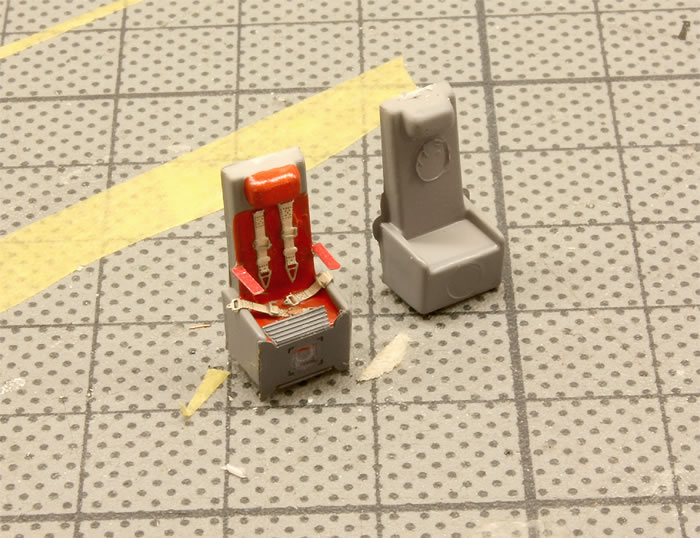
To my delight I was also able to purchase an Aires cockpit detail kit when I bought the kit - and so I was free of worries about how I should have dealt with the overly rudimentary cockpit, which was also easy to see.
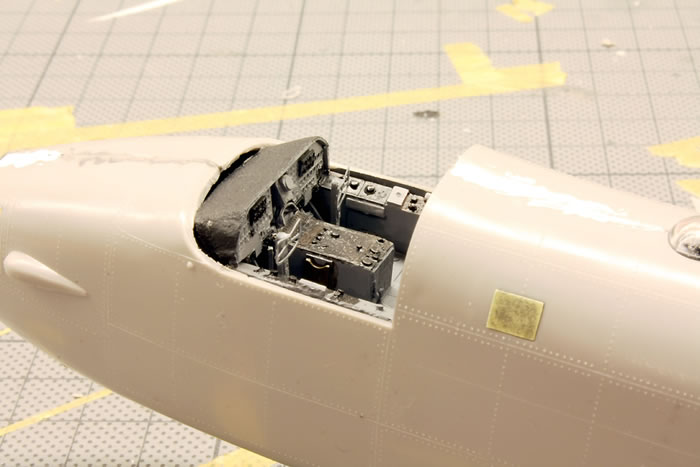
The two engines were also wired in detail, but not too much of this is visible on the finished model.
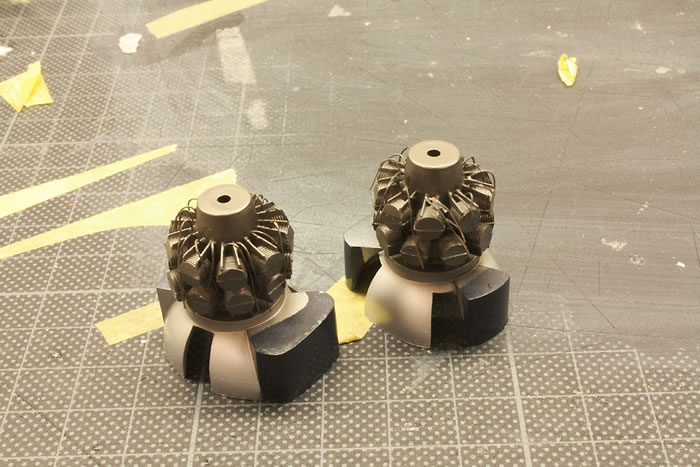
More worthwhile was the removal of the landing gear legs, which were fitted with hydraulic lines made of various wires, and, to a lesser extent, the landing gear bays and the inside of the landing gear fairings.
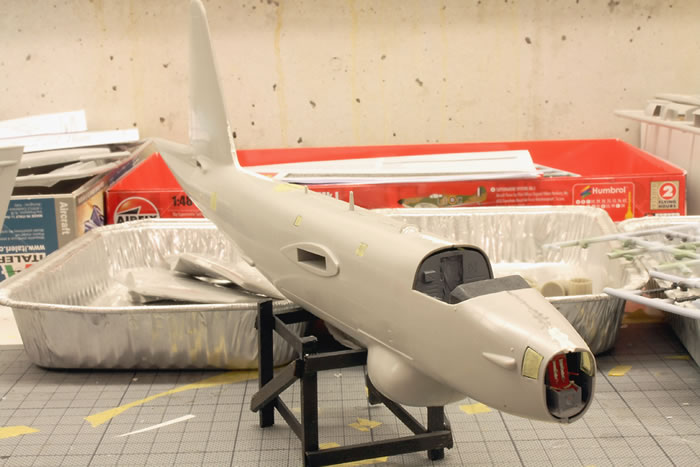
A novelty for me was the presentation of the glare protection on the cabin roof. Tamiya's "Clear Blue" offered the perfect material to show the darkened cockpit windows.
Decals and Finishing Touches |
My model shows P2V-7 BuNo 135552 of the VP-3 of the US Navy as it was flown from NAS Whidbey Island in 1963. The surfaces are still painted with "Gloss Sea Blue" over everything, a little later the Neptunes were provided with white hull backs to counteract the heating of the interior.
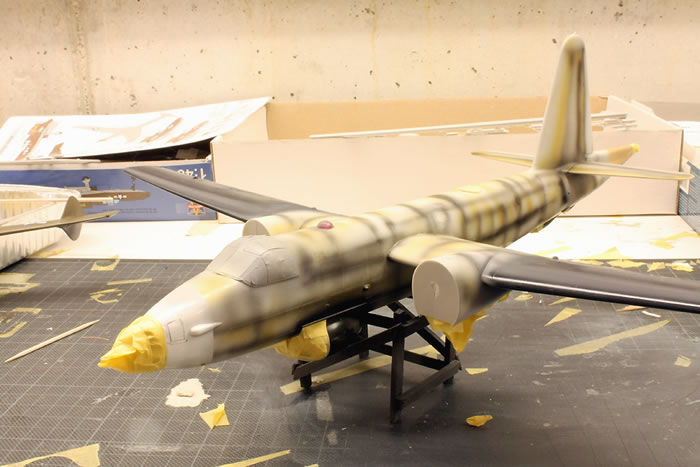
The markings for this were taken from the excellent decal sheet "P2V Neptune Part 1" by Caracal Models. The eight offered machines, all of them attractive machines, made me sway for a long time, which I should make out of the Hasegawa moulds laid out by Revell.
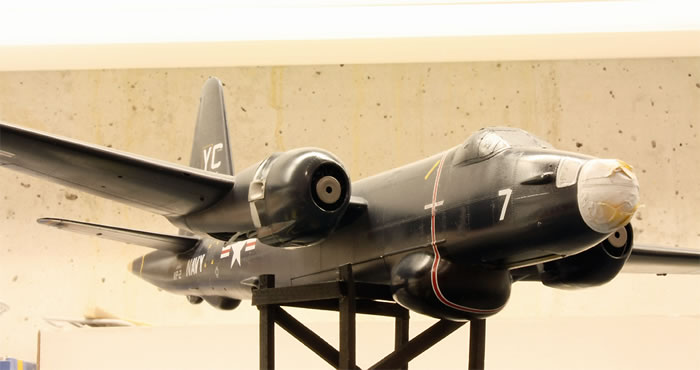
In the end, the decision was made for the only machine in the early colour scheme. Gunze H 326 was used for the realization of the "Gloss Sea Blue" -
To sum up, I would say that I will consider the examination of these time-honored forms a great benefit. Apart from the fact that they are the only way to depict a coherent P2V-7, the model offers a solid basis for practicing in detail according to your own needs. The modelling experience gained in the process is complemented by the knowledge of a truly interesting Cold War aircraft; the reward is then to be found in the form of a truly imposing and elegantly voluminous model in the display case.
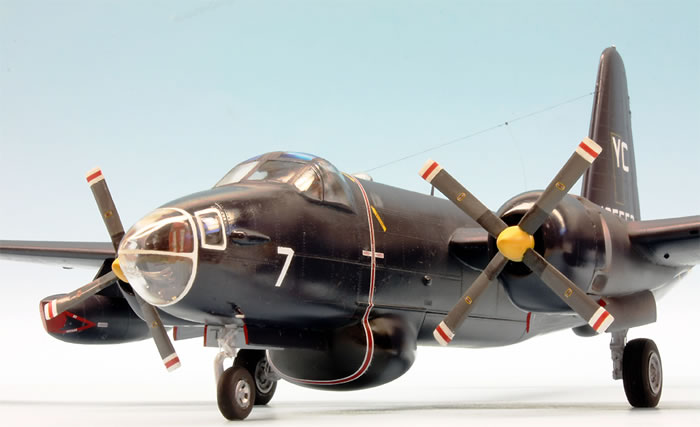
If you are interested in the building process, please have a look here on Scalemates:
https://www.scalemates.com/profiles/mate.php?id=10148&p=albums&album=54759
As ever, remarks will be appreciated: ro.sachsenhofer@gmx.at
Model, Images and Text Copyright ©
2020 by Roland Sachsenhofer
Page Created 17 March, 2020
Last Updated
15 May, 2020
Back to HyperScale Main Page

|
Home
| What's New | Features | Gallery | Reviews | Reference | Resource Guides | Forum |